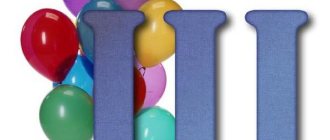Speech is one of the indicators of child development. As children grow up, they expand their vocabulary and actively explore the world around them. However, many babies, as they grow up, face problems when reproducing certain sounds. This is the norm in the first years of life. But if a child pronounces sounds incorrectly at an older age, then we can talk about a violation of sound pronunciation.
Violation of sound pronunciation is the most common speech defect that speech therapists constantly encounter. Pathology comes in various types:
- dyslalia with normal hearing and a healthy central nervous system;
- dyslalia in children with different degrees of hearing loss;
- dysarthria with normal hearing, but with organic lesions of the central nervous system.
Problems with sound production most often occur in preschool age. At this time, it is necessary to correct the speech defect. However, many parents do not react to the fact that the child cannot pronounce a large number of sounds. Some consider it unimportant, while others are confident that everything will go away on its own.
Norms for the development of sound pronunciation
If a child has difficulty pronouncing sounds, this is not always a cause for concern. In some cases, this is an age-related developmental norm. At each stage of growing up, a child acquires certain speech skills.
- from 1 month – children begin to unconsciously pronounce the vowel sounds “Y”, “U”, “A”, “E”. In infancy, the child mostly lies down, and the tongue can be thrown back. Therefore, sometimes the baby manages to pronounce several back-lingual sounds, for example, “G” or “X”;
- from 4 to 5 months - children try to practice reproducing individual sounds;
- from 5 to 10 months – the baby moves from individual sounds to syllables. Usually these are "Ba", "Ta", "Pa", Da" and "Ma". The number of syllables gradually increases. If up to 4 months the baby “booms,” then from 5 to 10 months he “babbles”;
- from 10 to 18 months - the child tries to pronounce his first words. By this point, children are able to consciously reproduce most of the vowel sounds - “A”, “Y”, “O”, “E”, “I” and “U”, as well as some consonant letters - “M”, “T”, “ P", "D", "B", "N", "K", "V", "G", "Y", "F", "X";
- from 1.5 to 3 years - the child is able to pronounce several whistling sounds - “C”, “S” and “Z”. If he cannot cope with this task, then you should pay attention to the situation. Note that from 1.5 to 2 years the baby often pronounces sounds incorrectly. For example, instead of “З” it is used “Дь” (“tooth”/“doubt”/“oak”). By the age of three, children often experience a softening of vowel and consonant sounds (“tumba - “tyumbya”, “baby - “crumpled”). As a rule, this goes away by the age of four;
- from 3 to 4 years. Children proceed to play hissing sounds - “Shch”, “Sh”, “Ch” and “Zh”. Until this moment, as a rule, they replace them with similar ones - “Sh” with “S” (“school” - “skola”), “Ch” with “C” or “T” (“chub” - “tsyub” / “tube”), etc. If a child up to five years old does not pronounce hissing sounds well, then this is the norm. The baby gradually learns, so these letters may not be pronounced correctly in all words. There is a partial replacement of sounds, for example, “the cat caught the mouse,” etc. It is important to regularly work with the child and correct him. Then he will quickly master the new sound;
- from 4 to 5 years. The appearance of sonorous sounds is observed. But up to 4.5 years, for example, the hard “L” can be replaced with the soft “L”. By the age of five, the child can already pronounce “R” and “L” well. This is the most complex group of sounds. Therefore, there is no need to demand from a child that at the age of three he clearly says “fish”, “crayfish” and other “growling” words. Moreover, if you put a lot of pressure on your baby, he may begin to pronounce “R” in the manner of the French language. This deviation will be more difficult to correct at an older age. Remember that it is better to turn on the sound when it is not there yet than to re-teach the child.
Naturally, all children are individual. Therefore, minor deviations from the norm are allowed. If parents constantly talk and practice with their child, then such a child pronounces sounds correctly by the age of five. However, more and more often preschool children have problems with sound pronunciation. Please note that if a child pronounces sounds incorrectly while at school, he may have problems learning to read and write.
Preliminary preparation
First you need to determine the degree of development of speech skills. A kind of diagnosis is carried out on the basis of records of the periods when the baby began to babble the first syllables or phrases. There are special tables of the dynamics of speech development, which indicate the norms of speech development at different ages.
Children often find it difficult to determine where the sound is and where the letter is. Therefore, parents should explain that sounds are pronounced, but letters are written. During exercises, you should not substitute concepts and confuse your child, so as not to complicate further learning at school.
Regular communication is as important as speech gymnastics. During a conversation, you should use simple and understandable words, explain actions, and answer questions. The little fidget feels sincere communication and happily makes contact.
Exercises should not be used as punishment for wrongdoing. The desire to talk and communicate will probably disappear completely.
It is useful to make a selection of educational cartoons. The kids learn well by copying their favorite heroes.
How do sound pronunciation disorders manifest themselves?
If the baby pronounces sounds incorrectly, this may indicate dyslalia or dysarthria. These deviations have some differences. With dyslalia, the pronunciation of sounds of different groups is impaired - sonorant, hissing, front-lingual, and so on. Speech defects can manifest themselves in different ways:
- absence of sounds (omission of complex letters in the words “yoke” - “yoke”);
- replacing sounds (together with “R” the child pronounces “L”, for example “fish” - “lyba”);
- distortion of sounds (French “R”, side “W”, etc.).
Dyslalia often develops against the background of hearing loss. Children with hearing loss have difficulty distinguishing between whistling and hissing, dull and voiced sounds.
With dysarthria, the child pronounces consonants and vowels incorrectly. Improper breathing and decreased emotional expressiveness of speech are also observed. It is worth noting that disturbances in the pronunciation of sounds associated with dysarthria are more stable. Therefore, correction may require more time and effort.
Correcting pronunciation
There are many techniques that help you pronounce sounds correctly. But any workout begins with a warm-up.
- Preparation of the lungs. The child takes a deep breath and then forcefully releases it from his lungs. You can demonstrate the correct technique using a lit candle. It is placed on the table in such a way that the air blows out the flame during exhalation.
- "Swing". The baby smiles widely with his mouth open. The adult counts out loud to two. At each count, the baby moves the tip of his tongue from the right corner of his lips to the left, then vice versa. It is necessary to ensure that the lower jaw remains motionless.
- "Window". The mouth opens wide and stays in this position for three counts. Over time, the duration increases.
- “Brushing our teeth.” The baby opens his mouth and tries to smile broadly. The tip of the tongue slides over the teeth from side to side, imitating the movement of a toothbrush. Duration: 3 minutes.
- "Growl". A very fun exercise that children enjoy doing. They play a tiger family that growls at each other.
Causes of sound pronunciation problems
If the baby pronounces a number of sounds incorrectly and indistinctly, then it is worth being examined by a neurologist and speech therapist. The causes of problems with sound pronunciation may be different. However, it is necessary to identify the problem in a timely manner in order to select an effective correction program.
Dyslalia can occur due to:
- pathologies of the development of the speech apparatus (malocclusion, short frenulum, etc.);
- presence of two languages in the family;
- incorrect approach to the development of a child’s speech (communication in a “lisping” language);
- hearing loss;
- problems with sound pronunciation in one of the parents (children tend to tremble).
Dysarthria develops with damage to the central nervous system, which can be caused by:
- problems during intrauterine development;
- injuries during childbirth (umbilical cord entanglement, etc.);
- cerebral palsy;
- Rhesus conflict;
- serious infections that the child suffers;
- problems with blood circulation in the brain;
- brain injuries.
Even serious problems with the pronunciation of sounds can be corrected. However, many parents have one question. If sound pronunciation can be corrected, then why do many adults speak incorrectly? This is due to two factors. Some parents believe that there is nothing wrong with the incorrect pronunciation of certain sounds. There are also cases when they begin to provide assistance without identifying the cause of the speech defect. Naturally, correction of dyslalia with dysarthria will not have an effect.
Corrective work
If a child pronounces sounds incorrectly, you should contact a speech therapist. He will examine the baby, determine the cause of the disorder and prescribe an effective assistance program. It is selected individually in each case. In order for a child to speak normally, it is necessary to eliminate the cause of the violation of pronunciation of sounds. In some cases, surgical correction of the speech apparatus is required. Then the speech therapist refers the child to the dentist. After this, you can begin to produce the correct speech.
Many parents worry when their child pronounces many sounds incorrectly. In this case, to correct the disorder, it is better to contact the NEAPL Speech Therapy and Psychology Center. Experienced specialists use an integrated approach to correcting speech defects using speech therapy massage, play sessions, logorhythmics, and so on. A team of professionals works on the correct pronunciation of sounds, which allows you to achieve a lasting effect.
Organization of classes
It is worth adopting rules that will make training comfortable.
- Classes are conducted in a playful way. Adults can use ready-made fairy tales or invent them together with the children. Fascinating information is easily remembered, and words are pronounced reflexively.
- Training needs to be systematized. A clear daily routine is very important for the child’s psyche, so three times a week a certain time is set for comfortable classes. If the baby is sick or capricious, then it is better to postpone gymnastics until a more favorable period.
- The training time should be 10–15 minutes. You should not increase the duration, because it will be difficult for preschoolers to concentrate.
- It's not possible to get the right sound the first time. You need to be patient and persistent.
- Experts recommend preparing cards with images of animals or objects whose names contain a problematic sound. During classes, you should observe where pronunciation is more difficult: at the beginning, end or middle of a word.
- Exercising in front of a mirror is a great option. The little man sees not only the articulation of adults, but also his own.
Tips for parents
Quite often, the child pronounces the correct sounds during classes with speech therapists and teachers. But, returning home, he loses control of himself. This behavior is allowed in the first steps of correction, since the child learns to control himself gradually. However, parents should be persistent. They can help form auditory attention faster.
Many adults communicate little with children, limiting themselves to only short remarks, for example, “go eat,” “wash your hands,” and so on. To form the correct sound pronunciation, you need to talk more with the child. Voice any situations, accompanying them with visual contact. For correct pronunciation of sounds, the baby must see the articulation of the parents. Therefore, try to speak clearly, clearly and with intonation. When communicating with your child, avoid complex sentences. Too much information will not allow him to focus on sounds. At the same time, children often acquire the bad habit of listening to adults mechanically. This may interfere with correction, since the child will transfer this behavior to the teacher’s office.
Read more books to your baby. This will give him the opportunity not only to remember the correct sounds, but will also significantly expand his horizons. Fairy tales, poems, ditties and stories can be repeated several times. Children perceive better information that is already familiar to them. To learn how to reproduce sounds correctly, you can also role-play scenes and use various objects and gestures. Children like this form of activity and they do not resist. Watch how your baby pronounces sounds, whether he pronounces them clearly or tries to swallow them. Don't rush him while reading poetry. Let him say every sound.
The development of fine motor skills also has a good effect on the formation of correct speech. You will be surprised that modeling from plasticine or drawing will help your baby pronounce sounds well. This will also have a positive impact on the development of written speech in the future. The child must be able to fasten buttons, tie shoelaces, knots and bows. This also affects the correct pronunciation of sounds due to the development of hand-eye coordination.
Who speaks faster - a boy or a girl?
As a rule, girls start talking faster. According to various studies, boys speak fully 4-6 months later than girls. But this does not mean that they are developmentally delayed or have some kind of pathology.
There are several theories that explain this phenomenon:
Many scientists adhere to this version. According to it, boys have more of the hormone testosterone in the womb (indicators exceed those of girls several times). This hormone is involved in the formation of the central nervous system and affects the development of speech functions.
Biochemical.- Psychological-genetic. According to this version, communication skills have long been more necessary for the female sex. They were used in everyday life for communication in tribes and when raising offspring. Men were busy hunting and other activities that did not involve active verbal communication. It turns out that delayed speech development in boys is something of an archaism.
- Physiological. According to research, girls have more developed tactility and fine motor skills - this has a beneficial effect on the development of speech centers.
It is impossible to talk about the veracity of this or that theory, just as it is impossible to completely deny them. But the experience of many parents suggests that boys actually start speaking a little later.
Although, if a child, regardless of gender, speaks later than his peers, but otherwise develops normally, there is no need to worry about this. You can simply continue to study with your baby, replenishing his vocabulary. There are often cases when children, having accumulated a sufficient number of words, begin to speak quite coherently only a few months later than their peers, but no longer making their mistakes.









